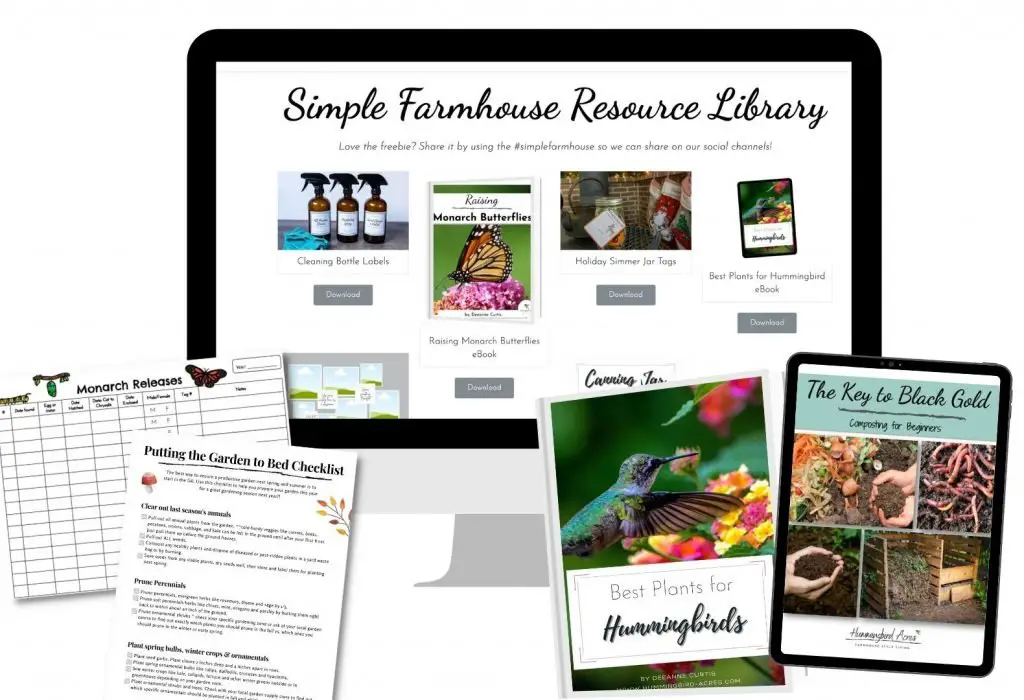4 Tips for Small Space Gardening – a Bigger Harvest
Are you short on space but still want to garden? You’re in luck! Here are four tips that will help you get the most out of your small gardening space. Plus, we’ll give you a few ideas for crops that do well in tight quarters. Let’s get started!
Disclosure: Some of the links below are affiliate links, meaning, at no additional cost to you, I will earn a commission if you click through and make a purchase.
Choose Compact Varieties
When picking what to plant, choose varieties that are bred to grow in small spaces. Anything with the words patio, tiny, container, or dwarf in the name is a good bet. Just because a plant is bred to be small doesn’t mean the fruits will be small or the yield will be less.
For small containers like window boxes, herbs, annual flowers and leaf lettuce are great choices. These plants grow quickly, and you can usually get many harvests throughout the summer.
If you are truly short of space, interplant your vegetables with your landscaping/flowers. There’s no rule that says you can’t mix the two. It can be a bit harder to harvest, but many vegetables can be ornamental in their own right. As a bonus, flowers also attract pollinators to your vegetable crops, giving you a bigger harvest.
Learn More- Flowers in the Carrot Patch
Grow Vertically
When picking plants and/or seeds also look for ones that can be grown vertically. Consider varieties that can be trained to grow vertically on support structures. Pole beans take up less space than bush beans. Vining cucumbers and squash actually take up less space than you think when trained to grow up a cattle panel.
Tomatoes can also be grown up cattle panels and be pruned to avoid disease and increase harvest.
Growing in a green stalk is another great way to maximize your space and grow vertically. GreenStalk Vertical Gardens make it easier to grow in small spaces with limited resources. Grow more with less space and time. You can learn more about GreenStalk on their website and use our code hummingbird for $10 off.
Companion Planting
Companion planting is often touted for the benefit of reducing pest infestations, but it also serves to conserve space in a small garden.
Shade-tolerant plants benefit from being planted next to taller crops. Basil likes a respite from the hot afternoon sun and does well next to tomatoes. Lettuce will keep producing all summer if shaded by almost any taller plant.
Early harvested vegetables, such as spinach, radishes, and peas, can be planted with slower-growing crops such as broccoli or peppers that will not take over the space until the spring-harvested vegetables have been harvested.
Any chance we get we will plant different varieties close together to not only reduce pest but also maximize on our space. Figuring our what grows best next to each other is really an experiment in the garden. Test out different garden plans and see what works. Just make sure you are recording what you do so that you can make educated decisions the following year.
If you don’t have a garden planner be sure to get one in our Market.
Succession Planting
Succession planting is a useful technique for any vegetable garden, large or small, but it is all the more valuable when space is limited. Succession planting means reseeding quick-growing crops every two to three weeks during the growing season.
It is especially useful with crops such as beans, zucchini, and lettuce that tend to exhaust themselves producing so much. By planting in succession, you will produce enough food for your family’s appetite, and you’ll have it all summer, not all at once.
Grow in Containers
Vegetable container gardening is a way to control the soil, sun, and growing conditions of your edible plants. It also allows you to fit edible gardening into the smallest spaces by placing the containers on your patio, balcony, front steps, and along the house foundation and driveway.
Virtually any fruit, vegetable, or herb can be grown in a container if the container is large enough to accommodate the mature size of the plant.
Learn more about Container Gardening
Herbs and leafy greens can grow in small containers or hanging baskets. Fruiting plants such as tomatoes, peppers, eggplants, and cucumbers work best when planted in 5-gallon containers—or larger, of course.
If planting in containers the soil will dry out much quicker, so set up a schedule for watering and stick with it!!
Join the Simple Farmhouse Resource Library
Labels | Recipes | Guides | And MORE!!!

If you’re looking to start gardening but don’t have a lot of space, container gardening is a great option for you. With these tips, you’ll be able to make the most of your small space gardening area and grow some delicious fruits and vegetables in the process! Want to learn more about container gardening? Check out our other great articles on container gardening. We cover everything from choosing the right containers to planting and caring for your crops. And if you still have questions, don’t hesitate to reach out to us. We’re happy to help!
